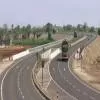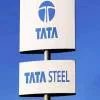- Home
- Real Estate
- What Leads to Project Delays?

What Leads to Project Delays?
Managing risks is a strategic tool to reap the full benefits of the critical initiatives implemented in any organisation. Organisations that have implemented good risk management practices tend to reap the maximum advantage. This paper focuses on the study carried out for an infrastructure project by considering six major causes in various phases of the project regarding cost and time overruns and tried to determine the factor responsible for the inordinate delay of the project. This study was carried out by considering various elements under each of the identified major causes; for each major cause, a hypothesis was assumed and subjected to single-factor Analysis of Variance (ANOVA) by using an SPSS tool. The results showed that each identified factor under a major cause was equally responsible for cost and time overruns and that all the factors were interdependent, ie, the effect of delay in a factor would have a chain effect on other factors too.
Introduction
Risk is a variable associated with the implementation of a specific project with the potential to adversely affect the implementation of a project or interest of stakeholders. An infrastructure project by its very nature is more prone to risks than ordinary industrial projects. A crucial aspect of a successful infrastructure project development is, therefore, suitable identification, assessment, monitoring and control of risks.
In the current environment, value of money is accorded top priority by many construction organisations. However, the required value from project investment is not being recovered owing to their inability to deliver the objectives of the project, the prime factors being cost and time overruns. While risk owing to internal factors can be foreseen and minimised, risks owing to external factors, which cannot be comprehended easily and for which there is no contingency planning, will have a debilitating effect on the viability of the project. A study conducted by KPMG-PMI in 2012 reported that organisations that consistently adopted effective risk management practices were much better equipped to face the risks and produced results much better than traditional cost control measures.
Methodology
Six major causes along with relevant elements that could be contributors to that cause were identified and distributed as a structured questionnaire to 250 respondents who were either stakeholders or had knowledge of the project. Responses were received from 100 respondents. The six causes and the grading given in the questionnaire for each cause is given in Table 1. Each of the seven identified causes along with relevant factors was subjected to a single-factor ANOVA test using SPSS tool. In all the seven cases, the null hypothesis was assumed, that there is no difference of means between the factors responsible for a major cause and alternate hypothesis was, there is difference of means between the factors. If the result gives value of F less than Fcritical, we accept the null hypothesis and the means of the populations are equal and in case, F is greater than Fcritical, alternate hypothesis is accepted, ie, there is difference of means of the population.
Conclusion
- In all the six cases, the value of F was less than Fcritical, which implies that null hypothesis has been accepted, ie, there is no difference of means of the population (factors relevant to a cause).
- The value of F was less than Fcritical, which implied that each factor had equal potential to cause the time or cost overrun and that all factors were dependent, ie, delay in one factor can have a chain effect on the factors, also leading to delay in project schedule.
About the Authors:
K Srinivas and Bonniga Ravinder are Assistant Professors at NICMAR, Hyderabad.
| Table 1: THE CAUSES AND GRADING | |||
| Identifi ed cause | Grading of responses | ||
| 1) Factors susceptible to increase in cost | High | Moderate | Low |
| 2) Extent of impact on project schedule in execution and closing phase |
High impact | Moderate impact | Low impact |
| 3) Cost overruns in pre-execution phase | Strongly agree | Agree | Strongly disagree |
| 4) Impact of risks on project delivery | Most signifi cant | Moderately signifi cant | Least signifi cant |
| 5) Issues faced in adopting schedule control strategies | Strongly agree | Agree | Strongly disagree |
| 6) Cost overrun in execution and closing phase | Strongly agree | Agree | Strongly disagree |
| (a) Factors susceptible to increase in cost | |||||
| Grade | A | B | C | D | E |
| High | 67 | 41 | 32 | 26 | 19 |
| Medium | 30 | 59 | 60 | 63 | 52 |
| Low | 4 | 0 | 8 | 11 | 22 |
| A=Building material cost; B=Manpower cost; C=Borrowing cost; D=Equipment cost; E=Contractor/Subcontractor cost | |||||
| Summary | ||||
| Groups | Count | Sum | Average | Variance |
| Column A | 3 | 100 | 33.33333 | 1002.333 |
| Column B | 3 | 100 | 33.33333 | 914.3333 |
| Column C | 3 | 100 | 33.33333 | 677.3333 |
| Column D | 3 | 100 | 33.33333 | 716.3333 |
| Column E | 3 | 100 | 33.33333 | 496.3333 |
| ANOVA | ||||
| Source of variation | SS | df | df | F |
| Between groups | 0.266667 | 4 | 0.066667 | 8.76E-05 |
| Within groups | 7613.333 | 10 | 761.3333 | |
| Total | 7613.6 | 14 | ||
| Where SS=Sum of squares (for columns), df=degrees of freedom, MS = Mean square= SS/df and F is the ANOVA test value. Between groups means considering row-wise data hence 5-1=4 degrees of freedom and within groups means considering columns total 15 subtracting 1 for each column gives a value of 15-5=10 which is the degrees of freedom for columns (within groups). | ||||
| (b) Extent of impact on project schedule in execution and closing phase | |||||||||||||
| Impact | A | B | C | D | E | F | G | H | I | J | K | L | M |
| High | 48 | 41 | 41 | 38 | 34 | 31 | 28 | 28 | 24 | 24 | 17 | 17 | 14 |
| Medium | 28 | 41 | 17 | 41 | 17 | 55 | 41 | 55 | 48 | 45 | 41 | 31 | 32 |
| Low | 24 | 17 | 41 | 21 | 48 | 14 | 31 | 17 | 28 | 31 | 41 | 52 | 54 |
| A=Geological surprises; B=Inadequate availability of skilled labour; C=Delay in approvals; D=Contractual disputes; E=Unavailability of funds; F=Design change; G=Ineffective monitoring; H=Industrial relations; I=Coordination issues with project team/vendors; J=Pre-commissioning teething problems; K=Ineffective programme schedule; L=Lack of awareness of modern technology; M=Geographical challenges and cultural problems. | |||||||||||||
| Summary | ||||
| Groups | Count | Sum | Average | Variance |
| Column A | 3 | 100 | 33.33333 | 165.3333 |
| Column B | 3 | 99 | 33 | 192 |
| Column C | 3 | 99 | 33 | 192 |
| Column D | 3 | 100 | 33.33333 | 116.3333 |
| Column E | 3 | 99 | 33 | 241 |
| Column F | 3 | 100 | 33.33333 | 424.3333 |
| Column G | 3 | 100 | 33.33333 | 46.33333 |
| Column H | 3 | 100 | 33.33333 | 382.3333 |
| Column I | 3 | 100 | 33.33333 | 165.3333 |
| Column J | 3 | 100 | 33.33333 | 114.3333 |
| Column K | 3 | 99 | 33 | 192 |
| Column L | 3 | 100 | 33.33333 | 310.3333 |
| Column M | 3 | 100 | 33.33333 | 401.3333 |
| ANOVA | ||||||
| Source of variation | SS | df | MS | F | P-value | F crit |
| Between groups | 0.923077 | 12 | 0.076923 | 0.00034 | 1 | 2.147926 |
| Within groups | 5,886 | 26 | 226.3846 | |||
| Total | 5,886.923 | 38 | ||||
| Here F< F Critical | ||||||
| c) Cost overrun in pre-execution phase | ||||||
| Grade | A | B | C | D | E | F |
| Strongly agree | 22 | 26 | 15 | 11 | 15 | 8 |
| Agree | 48 | 41 | 70 | 81 | 69 | 64 |
| Strongly disagree | 30 | 33 | 15 | 8 | 16 | 28 |
| A=Scope creep; B=Inadequate detailed project report; C=Acquisition of land at market price; D=High cost of environmental safeguards; E=Wrong selection of consultant; F=Ineffective R&R policies. | ||||||
| Summary | ||||
| Groups | Count | Sum | Average | Variance |
| Column A | 3 | 100 | 33.33333 | 177.3333 |
| Column B | 3 | 100 | 33.33333 | 56.33333 |
| Column C | 3 | 68 | 22.66667 | 176.3333 |
| Column D | 3 | 55 | 18.33333 | 265.3333 |
| Column E | 3 | 57 | 19 | 48 |
| Column F | 3 | 80 | 26.66667 | 325.3333 |
| ANOVA | ||||||
| Source of variation | SS | df | MS | F | P-value | F crit |
| Between groups | 685.2381 | 6 | 114.2063 | 0.514112 | 0.788165 | 2.847726 |
| Within groups | 3,110 | 14 | 222.1429 | |||
| Total | 3,795.238 | 20 | ||||
| Here F < F critical | ||||||
| d) Impact of risks on project delivery | |||||
| Impact | A | B | C | D | E |
| Most significant | 685.2381 | 6 | 114.2063 | 0.514112 | 0.788165 |
| Significant | 3,110 | 14 | 222.1429 | ||
| Least significant | 3,795.238 | 20 | |||
| A=Ineffective planning; B=Time and cost escalation owing to ineffective resources; C=Non-compliance with standards; D=Non-availability of skilled and resourceful personnel; E=Ineffective fi nancial management | |||||
| Summary | ||||
| Groups | Count | Sum | Average | Variance |
| Column A | 3 | 100 | 33.33333 | 1,321.333 |
| Column B | 3 | 100 | 33.33333 | 880.3333 |
| Column C | 3 | 100 | 33.33333 | 265.3333 |
| Column D | 3 | 100 | 33.33333 | 166.3333 |
| Column E | 3 | 100 | 33.33333 | 89.33333 |
| ANOVA | ||||||
| Source of variation |
SS | df | MS | F | P-value | F crit |
| Between groups |
-1.8E-12 | 4 | -4.5E-13 | -8.4E-16 | 0.0003 | 3.47805 |
| Within groups | 5,445.333 | 10 | 544.5333 | |||
| Total | 5,445.333 | 14 | ||||
| Here also F < F critical | ||||||
| e) Issues faced in schedule control strategies | |||||
| Grading | A | B | C | D | E |
| Strongly agree | 17 | 3 | 7 | 3 | 14 |
| Agree | 69 | 55 | 36 | 24 | 72 |
| Strongly disagree | 14 | 41 | 57 | 73 | 14 |
| A=Government policies and procedures: B=Resistance to innovation by contractors: C= Delay in decision making: D=Delayed availability of funds: E=Incoherent project management team | |||||
| Summary | ||||
| Groups | Count | Sum | Average | Variance |
| Column A | 4 | 100 | 25 | 915.3333 |
| Column B | 4 | 99 | 24.75 | 678.9167 |
| Column C | 4 | 100 | 25 | 296.6667 |
| Column D | 4 | 100 | 25 | 410 |
| Column E | 4 | 100 | 25 | 1,025.333 |
| ANOVA | ||||||
| Source of variation | SS | df | MS | F | P-value | F crit |
| Between groups | 0.2 | 4 | 0.05 | 7.52E-05 | 1 | 3.055568 |
| Within groups | 9,978.75 | 15 | 665.25 | |||
| Total | 9,978.95 | 19 | ||||
| Here also F < F critical | ||||||
| f) Cost overrun in execution and closing phase | ||||||||||
| Grading | A | B | C | D | E | F | G | H | I | J |
| Strongly agree | 26 | 22 | 15 | 19 | 26 | 15 | 11 | 7 | 7 | 4 |
| Agree | 67 | 70 | 63 | 58 | 48 | 56 | 44 | 44 | 49 | 30 |
| Strongly disagree | 7 | 8 | 22 | 23 | 26 | 29 | 45 | 49 | 44 | 66 |
| A=Material price rise escalation beyond projections; B=Escalation in labour costs; C=Changes in design; D= Incremental fi nancial costs (foreign exchange, borrowing cost, etc); E=Location and connectivity to site; F=Inadequate availability of skilled resources; G= Weak contract administration/ claims management; H=Improper procurement planning; I=Contractual disputes; J=Wrong/poor selection of technology/equipment | ||||||||||
| Summary | ||||
| Groups | Count | Sum | Average | Variance |
| Column A | 4 | 100 | 25 | 904.6667 |
| Column B | 4 | 99 | 24.75 | 994.25 |
| Column C | 4 | 101 | 25.25 | 673.5833 |
| Column D | 4 | 100 | 25 | 534 |
| Column E | 4 | 100 | 25 | 326.6667 |
| Column F | 4 | 100 | 25 | 464.6667 |
| Column G | 4 | 99 | 24.75 | 341.5833 |
| Column H | 4 | 99 | 24.75 | 341.5833 |
| Column I | 4 | 99 | 24.75 | 495.5833 |
| Column J | 4 | 101 | 25.25 | 431.5833 |
| ANOVA | ||||||
| Source of ariation | SS | df | MS | F | P-value | F crit |
| Between groups | 1.4 | 9 | 0.155556 | 0.000282 | 1 | 2.210697 |
| Within groups | 1,6524.5 | 30 | 550.8167 | |||
| Total | 1,6525.9 | 39 | ||||
| Here also F < F critical | ||||||
K SRINIVAS and B RAVINDER present the results of a study on causative factors for time and cost overruns in an infrastructure project by ANOVA. Managing risks is a strategic tool to reap the full benefits of the critical initiatives implemented in any organisation. Organisations that have implemented good risk management practices tend to reap the maximum advantage. This paper focuses on the study carried out for an infrastructure project by considering six major causes in various phases of the project regarding cost and time overruns and tried to determine the factor responsible for the inordinate delay of the project. This study was carried out by considering various elements under each of the identified major causes; for each major cause, a hypothesis was assumed and subjected to single-factor Analysis of Variance (ANOVA) by using an SPSS tool. The results showed that each identified factor under a major cause was equally responsible for cost and time overruns and that all the factors were interdependent, ie, the effect of delay in a factor would have a chain effect on other factors too. Introduction Risk is a variable associated with the implementation of a specific project with the potential to adversely affect the implementation of a project or interest of stakeholders. An infrastructure project by its very nature is more prone to risks than ordinary industrial projects. A crucial aspect of a successful infrastructure project development is, therefore, suitable identification, assessment, monitoring and control of risks. In the current environment, value of money is accorded top priority by many construction organisations. However, the required value from project investment is not being recovered owing to their inability to deliver the objectives of the project, the prime factors being cost and time overruns. While risk owing to internal factors can be foreseen and minimised, risks owing to external factors, which cannot be comprehended easily and for which there is no contingency planning, will have a debilitating effect on the viability of the project. A study conducted by KPMG-PMI in 2012 reported that organisations that consistently adopted effective risk management practices were much better equipped to face the risks and produced results much better than traditional cost control measures. Methodology Six major causes along with relevant elements that could be contributors to that cause were identified and distributed as a structured questionnaire to 250 respondents who were either stakeholders or had knowledge of the project. Responses were received from 100 respondents. The six causes and the grading given in the questionnaire for each cause is given in Table 1. Each of the seven identified causes along with relevant factors was subjected to a single-factor ANOVA test using SPSS tool. In all the seven cases, the null hypothesis was assumed, that there is no difference of means between the factors responsible for a major cause and alternate hypothesis was, there is difference of means between the factors. If the result gives value of F less than Fcritical, we accept the null hypothesis and the means of the populations are equal and in case, F is greater than Fcritical, alternate hypothesis is accepted, ie, there is difference of means of the population. Conclusion In all the six cases, the value of F was less than Fcritical, which implies that null hypothesis has been accepted, ie, there is no difference of means of the population (factors relevant to a cause). The value of F was less than Fcritical, which implied that each factor had equal potential to cause the time or cost overrun and that all factors were dependent, ie, delay in one factor can have a chain effect on the factors, also leading to delay in project schedule. About the Authors: K Srinivas and Bonniga Ravinder are Assistant Professors at NICMAR, Hyderabad. Table 1: THE CAUSES AND GRADING Identifi ed cause Grading of responses 1) Factors susceptible to increase in cost High Moderate Low 2) Extent of impact on project schedule in execution and closing phase High impact Moderate impact Low impact 3) Cost overruns in pre-execution phase Strongly agree Agree Strongly disagree 4) Impact of risks on project delivery Most signifi cant Moderately signifi cant Least signifi cant 5) Issues faced in adopting schedule control strategies Strongly agree Agree Strongly disagree 6) Cost overrun in execution and closing phase Strongly agree Agree Strongly disagree (a) Factors susceptible to increase in cost Grade A B C D E High 67 41 32 26 19 Medium 30 59 60 63 52 Low 4 0 8 11 22 A=Building material cost; B=Manpower cost; C=Borrowing cost; D=Equipment cost; E=Contractor/Subcontractor cost Summary Groups Count Sum Average Variance Column A 3 100 33.33333 1002.333 Column B 3 100 33.33333 914.3333 Column C 3 100 33.33333 677.3333 Column D 3 100 33.33333 716.3333 Column E 3 100 33.33333 496.3333 ANOVA Source of variation SS df df F Between groups 0.266667 4 0.066667 8.76E-05 Within groups 7613.333 10 761.3333 Total 7613.6 14 Where SS=Sum of squares (for columns), df=degrees of freedom, MS = Mean square= SS/df and F is the ANOVA test value. Between groups means considering row-wise data hence 5-1=4 degrees of freedom and within groups means considering columns total 15 subtracting 1 for each column gives a value of 15-5=10 which is the degrees of freedom for columns (within groups). (b) Extent of impact on project schedule in execution and closing phase Impact A B C D E F G H I J K L M High 48 41 41 38 34 31 28 28 24 24 17 17 14 Medium 28 41 17 41 17 55 41 55 48 45 41 31 32 Low 24 17 41 21 48 14 31 17 28 31 41 52 54 A=Geological surprises; B=Inadequate availability of skilled labour; C=Delay in approvals; D=Contractual disputes; E=Unavailability of funds; F=Design change; G=Ineffective monitoring; H=Industrial relations; I=Coordination issues with project team/vendors; J=Pre-commissioning teething problems; K=Ineffective programme schedule; L=Lack of awareness of modern technology; M=Geographical challenges and cultural problems. Summary Groups Count Sum Average Variance Column A 3 100 33.33333 165.3333 Column B 3 99 33 192 Column C 3 99 33 192 Column D 3 100 33.33333 116.3333 Column E 3 99 33 241 Column F 3 100 33.33333 424.3333 Column G 3 100 33.33333 46.33333 Column H 3 100 33.33333 382.3333 Column I 3 100 33.33333 165.3333 Column J 3 100 33.33333 114.3333 Column K 3 99 33 192 Column L 3 100 33.33333 310.3333 Column M 3 100 33.33333 401.3333 ANOVA Source of variation SS df MS F P-value F crit Between groups 0.923077 12 0.076923 0.00034 1 2.147926 Within groups 5,886 26 226.3846 Total 5,886.923 38 Here F< F Critical c) Cost overrun in pre-execution phase Grade A B C D E F Strongly agree 22 26 15 11 15 8 Agree 48 41 70 81 69 64 Strongly disagree 30 33 15 8 16 28 A=Scope creep; B=Inadequate detailed project report; C=Acquisition of land at market price; D=High cost of environmental safeguards; E=Wrong selection of consultant; F=Ineffective R&R policies. Summary Groups Count Sum Average Variance Column A 3 100 33.33333 177.3333 Column B 3 100 33.33333 56.33333 Column C 3 68 22.66667 176.3333 Column D 3 55 18.33333 265.3333 Column E 3 57 19 48 Column F 3 80 26.66667 325.3333 ANOVA Source of variation SS df MS F P-value F crit Between groups 685.2381 6 114.2063 0.514112 0.788165 2.847726 Within groups 3,110 14 222.1429 Total 3,795.238 20 Here F < F critical d) Impact of risks on project delivery Impact A B C D E Most significant 685.2381 6 114.2063 0.514112 0.788165 Significant 3,110 14 222.1429 Least significant 3,795.238 20 A=Ineffective planning; B=Time and cost escalation owing to ineffective resources; C=Non-compliance with standards; D=Non-availability of skilled and resourceful personnel; E=Ineffective fi nancial management Summary Groups Count Sum Average Variance Column A 3 100 33.33333 1,321.333 Column B 3 100 33.33333 880.3333 Column C 3 100 33.33333 265.3333 Column D 3 100 33.33333 166.3333 Column E 3 100 33.33333 89.33333 ANOVA Source of variation SS df MS F P-value F crit Between groups -1.8E-12 4 -4.5E-13 -8.4E-16 0.0003 3.47805 Within groups 5,445.333 10 544.5333 Total 5,445.333 14 Here also F < F critical e) Issues faced in schedule control strategies Grading A B C D E Strongly agree 17 3 7 3 14 Agree 69 55 36 24 72 Strongly disagree 14 41 57 73 14 A=Government policies and procedures: B=Resistance to innovation by contractors: C= Delay in decision making: D=Delayed availability of funds: E=Incoherent project management team Summary Groups Count Sum Average Variance Column A 4 100 25 915.3333 Column B 4 99 24.75 678.9167 Column C 4 100 25 296.6667 Column D 4 100 25 410 Column E 4 100 25 1,025.333 ANOVA Source of variation SS df MS F P-value F crit Between groups 0.2 4 0.05 7.52E-05 1 3.055568 Within groups 9,978.75 15 665.25 Total 9,978.95 19 Here also F < F critical f) Cost overrun in execution and closing phase Grading A B C D E F G H I J Strongly agree 26 22 15 19 26 15 11 7 7 4 Agree 67 70 63 58 48 56 44 44 49 30 Strongly disagree 7 8 22 23 26 29 45 49 44 66 A=Material price rise escalation beyond projections; B=Escalation in labour costs; C=Changes in design; D= Incremental fi nancial costs (foreign exchange, borrowing cost, etc); E=Location and connectivity to site; F=Inadequate availability of skilled resources; G= Weak contract administration/ claims management; H=Improper procurement planning; I=Contractual disputes; J=Wrong/poor selection of technology/equipment Summary Groups Count Sum Average Variance Column A 4 100 25 904.6667 Column B 4 99 24.75 994.25 Column C 4 101 25.25 673.5833 Column D 4 100 25 534 Column E 4 100 25 326.6667 Column F 4 100 25 464.6667 Column G 4 99 24.75 341.5833 Column H 4 99 24.75 341.5833 Column I 4 99 24.75 495.5833 Column J 4 101 25.25 431.5833 ANOVA Source of ariation SS df MS F P-value F crit Between groups 1.4 9 0.155556 0.000282 1 2.210697 Within groups 1,6524.5 30 550.8167 Total 1,6525.9 39 Here also F < F critical




















